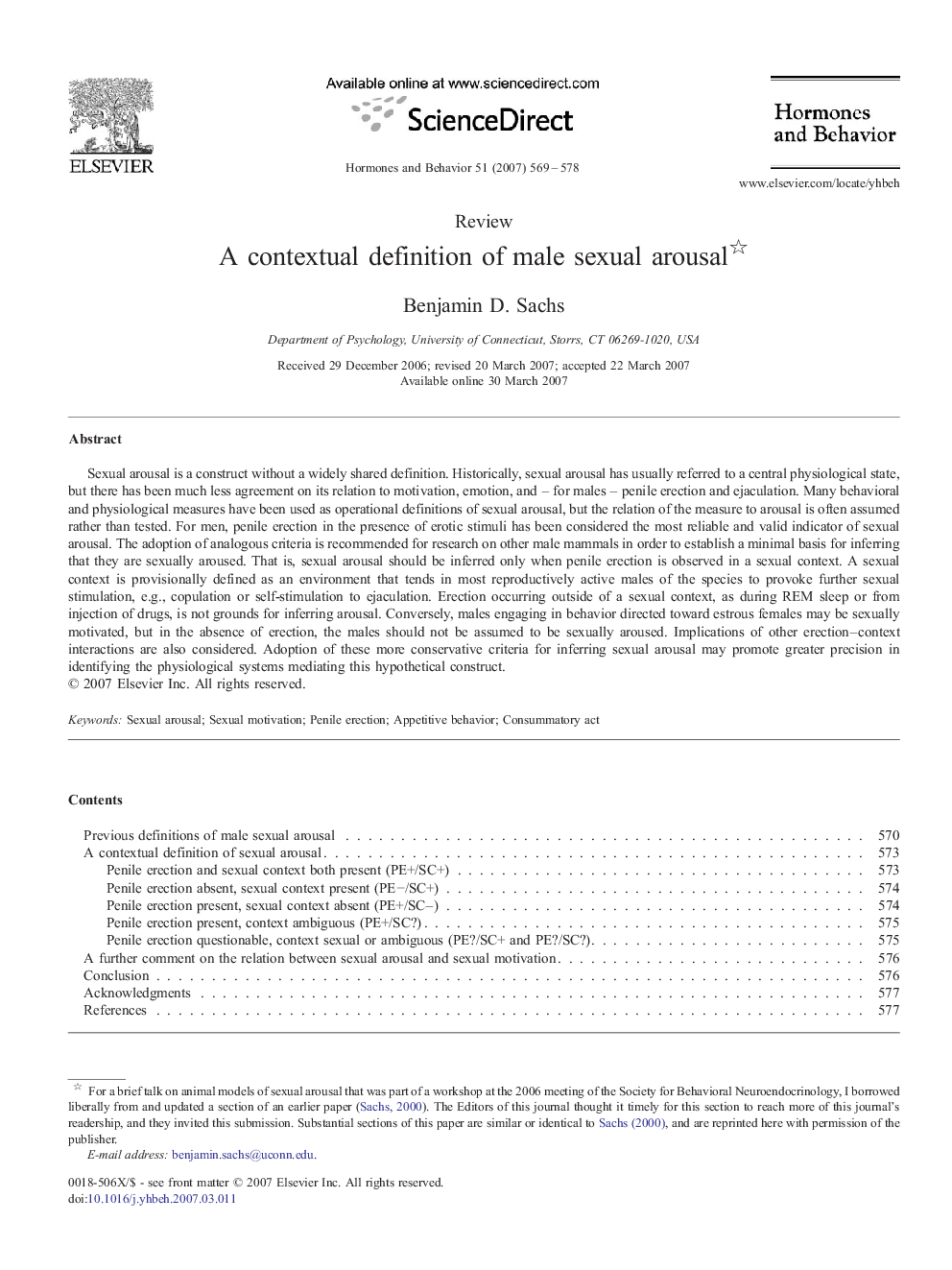| کد مقاله | کد نشریه | سال انتشار | مقاله انگلیسی | نسخه تمام متن |
|---|---|---|---|---|
| 323317 | 540552 | 2007 | 10 صفحه PDF | دانلود رایگان |

Sexual arousal is a construct without a widely shared definition. Historically, sexual arousal has usually referred to a central physiological state, but there has been much less agreement on its relation to motivation, emotion, and – for males – penile erection and ejaculation. Many behavioral and physiological measures have been used as operational definitions of sexual arousal, but the relation of the measure to arousal is often assumed rather than tested. For men, penile erection in the presence of erotic stimuli has been considered the most reliable and valid indicator of sexual arousal. The adoption of analogous criteria is recommended for research on other male mammals in order to establish a minimal basis for inferring that they are sexually aroused. That is, sexual arousal should be inferred only when penile erection is observed in a sexual context. A sexual context is provisionally defined as an environment that tends in most reproductively active males of the species to provoke further sexual stimulation, e.g., copulation or self-stimulation to ejaculation. Erection occurring outside of a sexual context, as during REM sleep or from injection of drugs, is not grounds for inferring arousal. Conversely, males engaging in behavior directed toward estrous females may be sexually motivated, but in the absence of erection, the males should not be assumed to be sexually aroused. Implications of other erection–context interactions are also considered. Adoption of these more conservative criteria for inferring sexual arousal may promote greater precision in identifying the physiological systems mediating this hypothetical construct.
Journal: Hormones and Behavior - Volume 51, Issue 5, May 2007, Pages 569–578